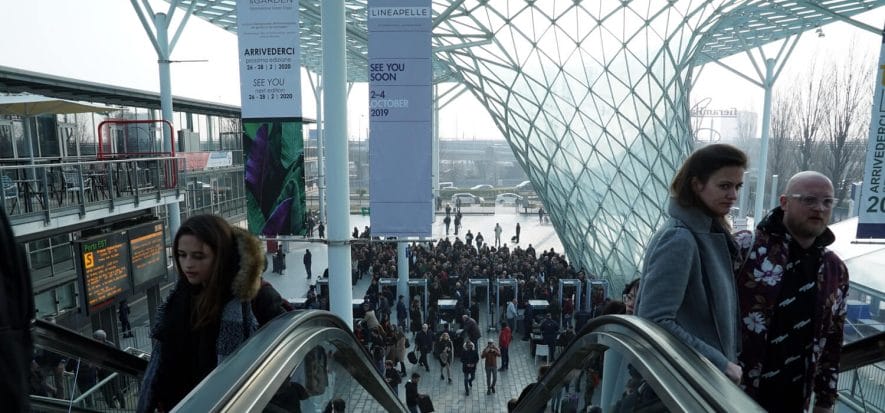“There were times during the first day where we even ran into some problems due to the number of people in our stand. We’ve seen a lot of interest, we’ve met our well-established clients, but we’ve also had some calmer moments”. According to Paolo Testi, from the Tuscan company La Bretagna, Lineapelle96 has started with a bang. At the exhibition to present his collections, in which leathers that were tanned following the traditional vegetable method share the stage with cutting edge ideas like waterproof leather (“We worked hard to find the right formula: vegetable tannins are hydrophilic”), Testi acknowledges that the fashion market isn’t experiencing the best of times: “But we’re not letting that scare us, we prefer to give ourselves a broader horizon,” he explained. “We’re happy with our method and our vision, regardless of the external circumstances”. Speaking of external circumstances, Aldo Donati (from the tannery Ausonia) directed attention toward the negotiations due in March between China and the United States, the key protagonists of the trade war of the second half of 2018: “If tensions lessen, some good will come out of it, otherwise we’ll continue to act in the context of the last 6-8 months. If Washington imposes tariffs, Beijing will suffer as a direct consequence”. “We need to stay optimistic, 2019 has everything we need to do well,” Antonio Cioffi, from the tannery CoTiNa in Campania, maintains. “And that’s not just wishful thinking. Clients want to do business, they’re looking for quality, and thanks to the reshoring initiatives, more work is being done in Italy.” “It’s been years since we’ve seen such an exciting start for the exhibition,” recalled the managers of FM in Tuscany: “We’ve been visited by buyers from around the world, including lots of Chinese and Indian buyers, who didn’t just look at the small swatches, but went straight to the samples”.
Widespread enthusiasm
Lineapelle96 began under the best auspices for the synthetic materials industry, with stands becoming quite crowded, a sign of the renewed interest in these materials. Paolo Ciccarelli, chairman and CEO of the Milanese brand Schmid, explained why, “Synthetic materials are becoming an acceptable alternative, which often responds better to the demands of creativity. It lets you work it more, innovate more, and that’s what the big brands want, they’re looking for quality.” Particularly for footwear and leathergoods, “which is our reference industry”, added Ciccarelli, “but I think that in the future we’ll have greater synergy with the clothing industry. For instance, the same bolt could be used for three different applications at the same time.”










